Oxford Practical English Usage: The Ultimate Guide for English Learners and Teachers
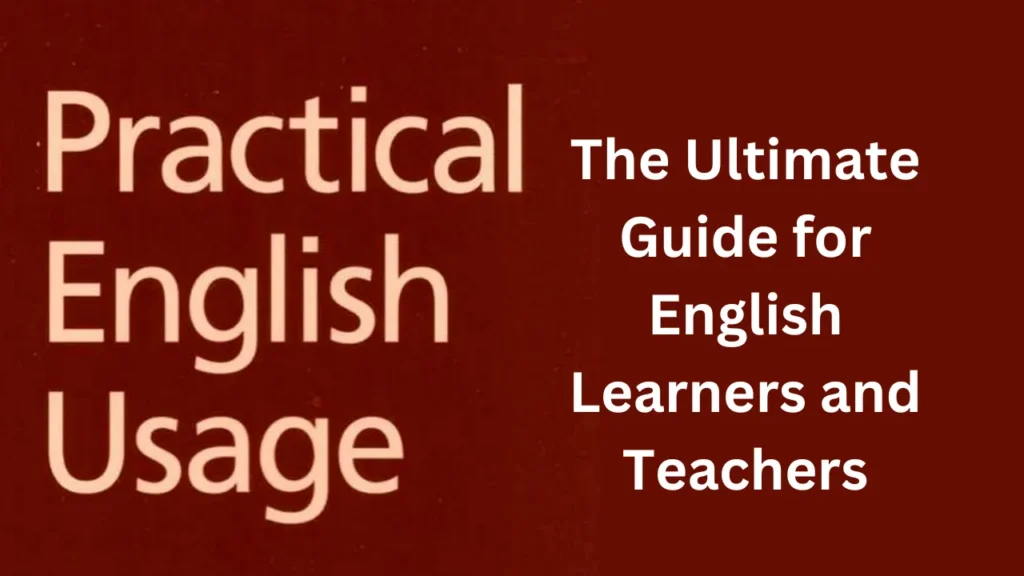
One book stands out as a beacon of clarity and practical wisdom in the vast sea of English language learning resources: Oxford Practical English Usage. Whether you’re a dedicated English language learner, a seasoned teacher, or a professional seeking to refine your language skills, this comprehensive guide has become indispensable for navigating the often-confusing waters of English grammar, vocabulary, and usage.
But what makes Oxford Practical English Usage so special? Why has it become a go-to reference for millions of English learners and educators worldwide? In this comprehensive guide, we’ll dive deep into Oxford Practical English Usage, exploring its contents, benefits, and how to make the most of this powerful resource.
Read Online Crux of Education for all kinds of test preparation, free PDF Read Online
By the end of this post, you’ll understand:
- What Oxford Practical English Usage is and why it’s so highly regarded
- Who can benefit from using this book and how
- The core content areas covered and how they address common language challenges
- Practical strategies for using the book effectively in your learning or teaching
- How Oxford Practical English Usage compares to other English reference books
- Digital resources and companion materials to enhance your learning experience
- Expert tips for mastering English with the help of this invaluable guide
Whether you’re looking to improve your English skills, enhance your teaching methods, or simply be curious about one of the most respected English usage guides available, this post will provide you with a thorough understanding of Oxford Practical English Usage and how it can revolutionize your approach to learning and using English.
Are you ready to unlock the secrets of clear, correct, and natural English usage? Let’s embark on this journey through the pages of Oxford Practical English Usage and discover how it can transform your relationship with the English language.
1. Understanding Oxford Practical English Usage
Before we delve into the specifics of how to use this resource, it’s essential to understand what Oxford Practical English Usage is and how it came to be such a respected reference in the world of English language learning.
What is Oxford Practical English Usage?
Oxford Practical English Usage is a comprehensive reference book that addresses questions of English grammar, vocabulary, and usage. Unlike traditional grammar books that often present rules in a dry, academic manner, this guide takes a practical approach, focusing on real-world language use and common problems faced by English learners.
Key features of Oxford Practical English Usage include:
- Clear explanations of grammar rules and usage patterns
- Numerous examples demonstrating correct usage in context
- Information on common errors and how to avoid them
- Comparisons between British and American English
- Guidance on formal and informal language use
History and Evolution of the Book
First published in 1980, Oxford Practical English Usage was written by Michael Swan, a renowned English language teacher and materials writer. The book was born out of Swan’s extensive experience teaching English and his recognition of the need for a more practical, user-friendly guide to English usage.
Since its initial publication, the book has undergone several revisions and updates:
- 1980: First edition published
- 1995: Second edition released, incorporating new language developments
- 2005: Third edition, further expanded and updated
- 2016: Fourth edition, the most recent version, reflecting modern English usage
Each new edition has built upon the strengths of its predecessors while adapting to the evolving nature of the English language and the changing needs of learners and teachers.
Key Features and Organization
Oxford Practical English Usage is designed for easy reference and practical application. Its organization and features make it stand out among other language resources:
- Alphabetical Order: Entries are arranged alphabetically, making it easy to find specific topics quickly.
- Cross-References: Extensive cross-referencing helps users explore related topics and gain a more comprehensive understanding.
- Clear Examples: Each entry includes multiple examples, demonstrating correct usage in various contexts.
- Contrasting Errors: Many entries show common mistakes alongside correct usage, helping learners avoid pitfalls.
- British and American English: The book highlights the differences between these two major varieties of English.
- Usage Notes: Special notes provide additional information on particularly tricky or important points.
- Phonetic Transcriptions: For entries related to pronunciation, phonetic transcriptions are provided.
- Index: A comprehensive index makes it easy to find information on specific language points.
This thoughtful organization makes Oxford Practical English Usage not just a reference book, but a practical tool for improving English skills on a day-to-day basis.
2. Who Benefits from Oxford Practical English Usage?
Oxford Practical English Usage casts a wide net, offering valuable insights and guidance to a diverse range of users. Let’s explore the primary groups that can benefit from this resource:
English Language Learners
For those learning English as a second or foreign language, Oxford Practical English Usage is an invaluable companion. It offers:
- Clear explanations of complex grammar points
- Guidance on natural, idiomatic language use
- Help with common problem areas for non-native speakers
- Insights into subtle differences in meaning and usage
Whether you’re at an intermediate or advanced level, this book can help you refine your English and avoid common pitfalls.
Teachers and Educators
English language teachers find Oxford Practical English Usage to be an essential resource for several reasons:
- It provides authoritative answers to students’ tricky questions
- It offers examples and explanations that can be incorporated into lessons
- It helps teachers understand and explain the nuances of English usage
- It serves as a reference for creating teaching materials and assessments
Many language schools and TEFL (Teaching English as a Foreign Language) programs consider this book a must-have for their teachers.
Writers and Editors
Professional writers and editors, especially those working in English as a second language, can benefit greatly from Oxford Practical English Usage:
- It helps maintain consistency in writing style
- It offers guidance on formal vs. informal language use
- It clarifies fine points of grammar that can affect meaning
- It provides information on British vs. American English for international audiences
Non-native English Speakers in Professional Settings
For professionals using English in international business, academia, or other fields, this book can be a crucial tool:
- It helps in writing clear, correct emails and reports
- It guides formal language for presentations and meetings
- It clarifies cultural differences in language use
- It boosts confidence in English communication skills
By addressing the needs of these diverse groups, Oxford Practical English Usage has cemented its place as a versatile and essential resource in the world of English language learning and usage.
3. Core Content Areas Covered in Oxford Practical English Usage
Oxford Practical English Usage covers a wide range of topics related to the English language. Let’s explore the main content areas and how they address common language challenges:
Grammar and Structure
The book provides comprehensive coverage of English grammar, including:
- Verb tenses and aspects
- Modal verbs and their uses
- Conditional sentences
- Relative clauses
- Passive voice
- Articles (a, an, the)
- Prepositions
For each grammatical topic, the book offers clear explanations, examples, and common errors to avoid. This helps learners understand not just the rules, but how to apply them correctly in real-life situations.
Vocabulary and Word Choice
Oxford Practical English Usage goes beyond grammar to address issues of vocabulary and word choice:
- Commonly confused words (e.g., affect vs. effect)
- Collocations (words that often go together)
- Idiomatic expressions
- Formal vs. informal vocabulary
- British vs. American word choices
This focus on vocabulary helps learners express themselves more precisely and naturally in English.
Pronunciation and Phonetics
While not primarily a pronunciation guide, the book does cover important aspects of English pronunciation:
- Stress patterns in words and sentences
- Intonation
- Phonetic transcriptions for difficult words
- Pronunciation differences between British and American English
These sections help learners improve their spoken English and understand the sounds of the language better.
Common Errors and How to Avoid Them
One of the most valuable aspects of Oxford Practical English Usage is its focus on common errors made by English learners. For many entries, the book provides:
- Incorrect usage examples
- Explanations of why these are wrong
- Correct alternatives
This approach helps learners avoid pitfalls and improve their accuracy in English usage.
British vs. American English
Given the global nature of English, the book pays special attention to differences between British and American English:
- Spelling differences (e.g., color vs. color)
- Vocabulary variations (e.g., lift vs. elevator)
- Grammatical differences (e.g., different to vs. different from)
- Pronunciation variations
This information is crucial for learners who need to navigate between these two major varieties of English.
By covering these core content areas, Oxford Practical English Usage provides a comprehensive resource for addressing the most common challenges faced by English language learners and users.
4. How to Use Oxford Practical English Usage Effectively
To get the most out of Oxford Practical English Usage, it’s important to understand how to navigate and apply its wealth of information. Here are some strategies for using the book effectively:
Navigating the Book’s Structure
- Familiarize yourself with the contents: Spend some time browsing the book to understand its layout and the types of information it contains.
- Use the alphabetical entries: When you have a specific question, look up the relevant word or concept in the alphabetical list of entries.
- Read related entries: Use the cross-references provided to explore related topics and gain a more comprehensive understanding.
Using the Index and Cross-References
- Consult the index: If you’re not sure which entry to look for, check the comprehensive index at the back of the book.
- Follow cross-references: Pay attention to the “see also” notes, which guide you to related entries that can deepen your understanding.
- Use the contents page: For broader topics, the contents page can guide you to the relevant sections of the book.
Applying Examples in Real-Life Situations
- Study the examples: Each entry provides multiple examples of correct usage. Analyze these to understand how the language point is used in context.
- Create your examples: After studying an entry, try to create your sentences using the language point correctly.
- Compare with error examples: When provided, study the incorrect examples to understand common mistakes and how to avoid them.
Incorporating it into Daily Language Learning Routines
- Regular consultation: Make it a habit to consult the book whenever you encounter a language question in your reading or writing.
- Focused study: Choose a different entry or section to study in depth each day or week.
- Problem area focus: Identify your weak areas in English and spend extra time studying relevant entries.
- Use with other materials: When reading English texts or doing language exercises, keep the book handy to look up unfamiliar usages or to check your understanding.
By integrating Oxford Practical English Usage into your regular language learning or teaching routine, you can steadily improve your understanding and use of English. Remember, it’s not meant to be read cover-to-cover but rather consulted regularly as a practical guide to resolving language questions and improving overall English proficiency.
5. Oxford Practical English Usage vs. Other English Reference Books
To fully appreciate the value of Oxford Practical English Usage, it’s helpful to compare it with other types of English reference books. Let’s explore how it stacks up against traditional grammar books and style guides:
Comparison with Grammar Books
Traditional grammar books typically focus on presenting rules and structures in a systematic, often academic manner. In contrast, Oxford Practical English Usage:
- Focuses on practical application: It emphasizes how language is used rather than just stating rules.
- Addresses common problems: It targets areas that typically cause difficulty for learners.
- Provides more context: Examples show how language points are used in real-life situations.
- Covers usage, not just grammar: It goes beyond grammar to address vocabulary, pronunciation, and style issues.
While a comprehensive grammar book might provide more in-depth explanations of grammatical structures, Oxford Practical English Usage offers more immediately applicable guidance for everyday language use.
Comparison with Style Guides
Style guides, such as The Chicago Manual of Style or The Elements of Style, focus on writing conventions and stylistic choices. Oxford Practical English Usage differs in several ways:
- Broader focus: It covers grammar and usage, not just writing style.
- Learner-oriented: It’s designed for language learners, not just professional writers.
- More accessible: It uses clearer, less technical language than many style guides.
- International perspective: It addresses differences between British and American English, which many style guides don’t cover.
While style guides are invaluable for writers and editors, Oxford Practical English Usage serves a broader audience and covers a wider range of language issues.
Unique Features and Advantages
Several features make Oxford Practical English Usage stand out:
- Practical approach: It focuses on resolving real-world language problems rather than presenting abstract rules.
- Learner perspective: It anticipates and addresses the specific difficulties faced by non-native English speakers.
- Comprehensive coverage: It combines elements of a grammar book, usage guide, and style manual in one volume.
- Clear examples: It provides numerous, context-rich examples for each entry.
- Error focus: It explicitly addresses common mistakes, helping learners avoid pitfalls.
- Regular updates: New editions keep pace with changes in English usage over time.
- Authoritative yet accessible: It’s based on extensive research but presented in an easy-to-understand format.
While other reference books certainly have their place, Oxford Practical English Usage offers a unique combination of comprehensive coverage, practical focus, and learner-friendly presentation that makes it an invaluable resource for a wide range of English language users.
6. Digital Resources and Companion Materials
In our increasingly digital world, Oxford Practical English Usage has evolved beyond its print version to offer a range of digital resources and companion materials. These additional tools can enhance your learning experience and make the wealth of information in the book even more accessible.
eBook Versions and Their Benefits
Oxford Practical English Usage is available as an eBook, offering several advantages:
- Portability: Carry the entire book on your e-reader, tablet, or smartphone.
- Searchability: Quickly find specific entries or topics using the search function.
- Adjustable text: Customize font size and style for comfortable reading.
- Hyperlinked cross-references: Easily navigate between related entries.
- Updates: Receive the latest corrections and updates automatically.
The eBook version is particularly useful for learners and teachers who need quick access to the book’s content on the go.
Online Resources and Supplementary Materials
Oxford University Press, the publisher of Oxford Practical English Usage, offers various online resources to complement the book:
- Oxford Learner’s Dictionaries website: This free resource includes many usage notes based on the book.
- Oxford English Language Teaching website: Offers blog posts and articles that often reference Oxford Practical English Usage.
- Oxford Academic YouTube channel: Features videos on English language topics, some of which draw on content from the book.
These online resources can provide additional context and examples to support your learning.
Mobile Apps and Interactive Learning Tools
While there isn’t an official Oxford Practical English Usage app as of my last update, there are several mobile apps and tools that incorporate content from the book or offer similar functionality:
- Dictionary apps: Many Oxford dictionary apps include usage notes based on Oxford Practical English Usage.
- Language learning apps: Some apps feature exercises and explanations inspired by the book’s content.
- Grammar checker tools: Several online grammar checkers use principles from Oxford Practical English Usage in their algorithms.
When using these digital resources, it’s important to:
- Verify the credibility of the source
- Cross-reference with the official book when in doubt
- Use digital tools as supplements to, not replacements for, thorough study
By leveraging these digital resources and companion materials, you can extend your learning beyond the pages of the book and integrate Oxford Practical English Usage more fully into your daily language practice.
7. Expert Tips for Mastering English with Oxford Practical English Usage
To truly maximize the benefits of Oxford Practical English Usage, consider these expert tips for different types of learners and learning contexts:
Strategies for Different Types of Learners
- Visual Learners:
- Create mind maps or diagrams of related language concepts
- Use color-coding to highlight different parts of speech or usage patterns
- Draw visual representations of grammatical structures
- Auditory Learners:
- Read examples aloud to reinforce correct usage
- Discuss language points with study partners or language exchange buddies
- Create audio recordings of key rules and examples
- Kinesthetic Learners:
- Write out examples and rules by hand
- Act out scenarios using specific language points
- Create physical flashcards for problematic areas
Incorporating the Book into Classroom Teaching
For teachers, Oxford Practical English Usage can be a valuable classroom resource:
- Lesson planning: Use the book to prepare clear explanations and examples for grammar lessons
- Error correction: Refer to the book when addressing common student errors
- Student research: Assign students to investigate specific language points using the book
- Discussion prompts: Use interesting usage points as conversation starters
- Quiz material: Create quizzes based on entries in the book
Using the Book for Self-Study and Improvement
For self-directed learners, try these approaches:
- Daily entry: Study one new entry each day, creating your examples
- Problem area focus: Identify your weak points in English and concentrate on relevant entries
- Writing companion: Keep the book handy while writing to check usage and improve your style
- Vocabulary expansion: Use the book to explore nuances in word meanings and usage
- Pronunciation practice: Utilize the phonetic transcriptions to improve your pronunciation
- Comparative study: Compare British and American usage to broaden your understanding
Remember, consistent, focused practice is key to improving your English skills. Use Oxford Practical English Usage as a guide, but also seek opportunities to apply what you learn in real-life situations.
8. Common Challenges and How Oxford Practical English Usage Addresses Them
English learners and users often face specific challenges. Let’s explore how Oxford Practical English Usage helps address these issues:
Tackling Difficult Grammar Concepts
Complex grammar points like conditionals, reported speech, or the subjunctive mood can be confusing. Oxford Practical English Usage:
- Breaks down complex concepts into manageable parts
- Provides clear, concise explanations with multiple examples
- Highlights common errors and misconceptions
- Offers comparisons between similar structures to clarify differences
Clearing up Common Misconceptions
Many English learners struggle with persistent myths or oversimplifications about the language. The book addresses these by:
- Explaining the nuances of “rules” that have exceptions
- Clarifying the difference between prescriptive rules and actual usage
- Providing historical context for certain language patterns
- Addressing common confusions (e.g., “fewer” vs. “less”, “who” vs. “whom”)
Addressing Regional Variations in English Usage
With English being a global language, understanding its variations is crucial. Oxford Practical English Usage helps by:
- Marking differences between British and American English
- Noting other regional variations where relevant (e.g., Australian, Canadian English)
- Explaining how usage can vary in different English-speaking countries
- Providing guidance on international English for global communication
By addressing these common challenges head-on, Oxford Practical English Usage equips learners and users with the tools they need to navigate the complexities of the English language confidently.
Conclusion
Oxford Practical English Usage stands as an indispensable resource in the world of English language learning and teaching. Throughout this guide, we’ve explored:
- The unique features and organization of this comprehensive reference book
- Who can benefit from using it and how
- The core content areas it covers, from grammar to vocabulary and pronunciation
- Effective strategies for using the book in various learning contexts
- How it compares to other English reference books
- The digital resources and companion materials available
- Expert tips for mastering English with this invaluable guide
- How it addresses common challenges faced by English learners and users
Whether you’re a dedicated English language learner, a teacher, a writer, or a professional using English in your work, Oxford Practical English Usage offers clear, practical guidance to improve your understanding and use of the language.
Remember, language learning is a journey, not a destination. Oxford Practical English Usage is not meant to be read cover-to-cover but rather consulted regularly as you encounter questions or challenges in your English usage. By making it a habit to refer to this book, you’ll gradually build a deeper, more nuanced understanding of the English language.
We encourage you to:
- Acquire a copy of Oxford Practical English Usage, whether in print or digital format
- Incorporate it into your daily language learning or teaching routine
- Explore the additional online resources available
- Apply what you learn in real-life situations to reinforce your understanding
Have you used Oxford Practical English Usage before? How has it helped you in your English language journey? Share your experiences and tips in the comments below. Let’s create a community of learners who can support each other in mastering the intricacies of English usage!
Remember, every step you take in improving your English skills is a step towards more effective communication and greater opportunities in our interconnected world. Let Oxford Practical English Usage be your trusted companion on this rewarding journey.
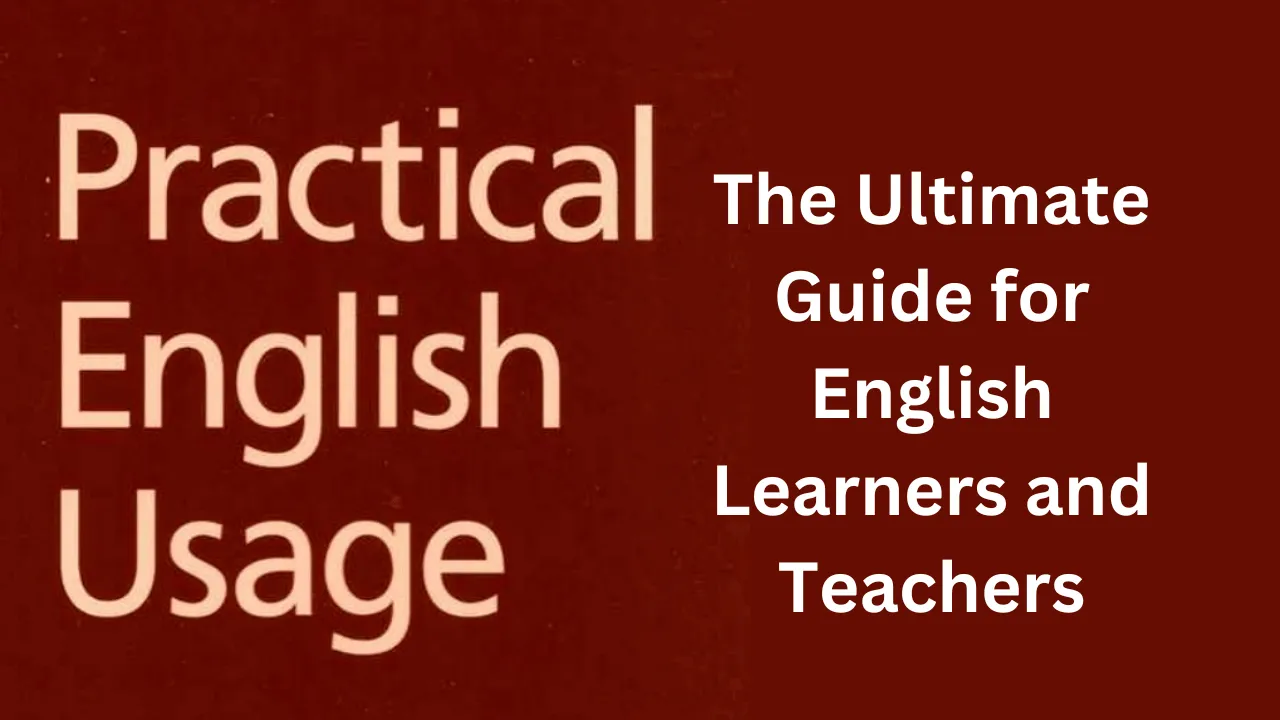


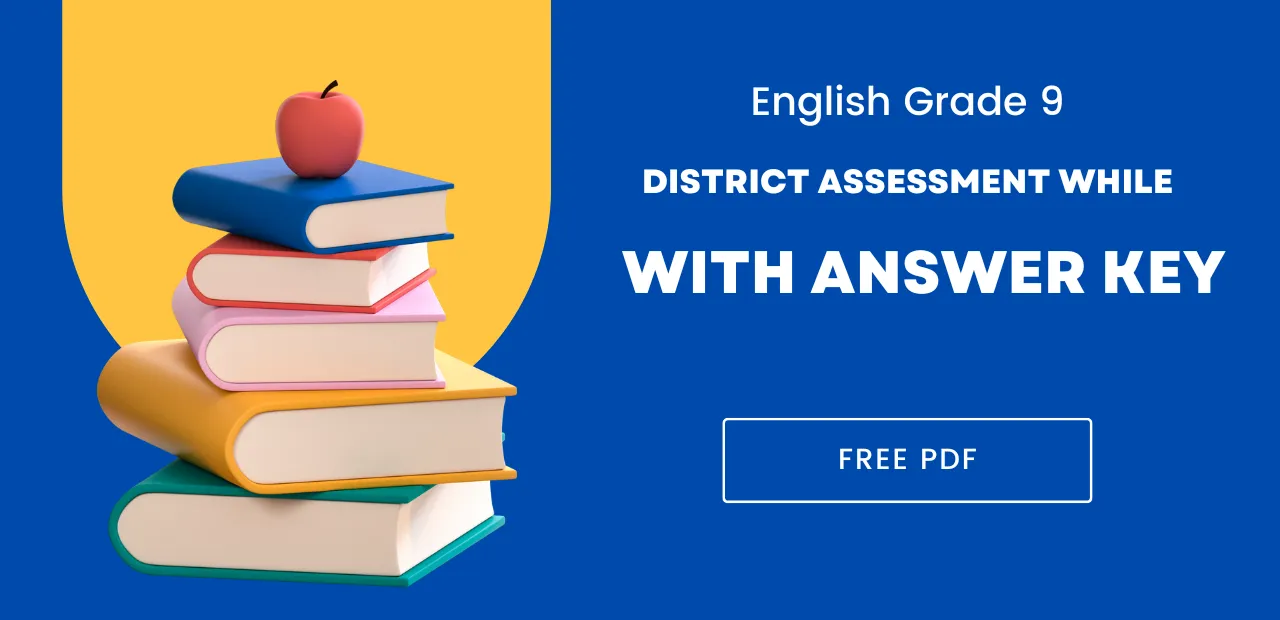



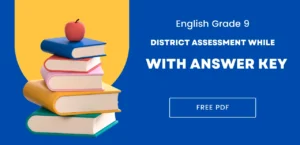
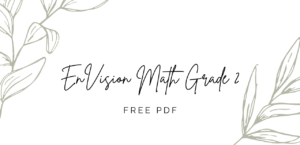





2 comments